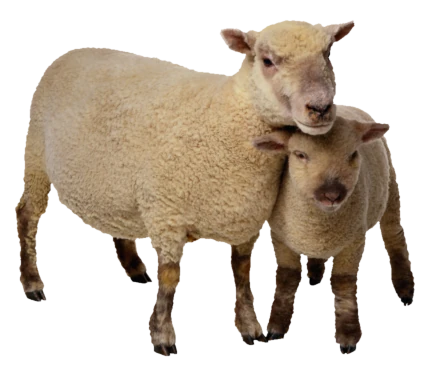Given the potential health impacts of dairy consumption, the numerous ethical concerns with the production of dairy, and the rise in available plant-based alternatives, it may be worth questioning whether or not we should continue the widespread practice of drinking milk.
Many people see milk as a necessary component of a healthy diet. This view, however, is based on outdated information. Many people thrive on a diet free of cow’s milk and other dairy products. There are several potential downsides to drinking large quantities of milk, including acne and lactose intolerance. Choosing not to eat milk products or drink cow’s milk has become much easier in recent years, with ever more delicious replacements being developed, from oat milk to cashew cheese.
Is Milk Bad for You?
It’s a widespread belief that milk is healthy, especially for children. But as we note below, some studies have suggested that a higher rate of milk and dairy product consumption doesn’t necessarily mean better bone health or a reduction in fractures. In fact, increased milk consumption has been tied to a greater incidence of some types of cancer. Further, over half of the global population suffers from lactose intolerance and may be made physically ill by consuming dairy. Whether it’s in your best interest to keep dairy in your diet is a discussion worth having with a trusted medical professional like a primary doctor or nutritionist. These professionals will be able to help you make the best decision for your unique situation.
Why Is Milk Bad for You?
There are several health issues to consider when consuming milk. Milk may cause acne, it contains large amounts of fat, and it triggers allergic reactions in a significant number of people.
Acne
As noted by the American Academy of Dermatology Association, liquid milk consumption has been linked to acne breakouts in several studies. One study with over 47,000 participants, all women, found that those who consumed two or more glasses of milk a day were 44 percent more likely to have acne. In a similar vein, another study with a sample of teenage boys found that those who drank milk were more likely to experience acne. The prevalence of acne amongst heavy consumers of milk may be tied to certain components in milk that are related to testosterone, which can stimulate oil production in the skin’s glands.
Antibiotics
The primary concern when it comes to antibiotic use in dairy cattle is the risk of antibiotic resistance. Antibiotic resistance develops when bacteria exposed to a particular antibiotic survive and go on to proliferate as a new, drug-resistant strain. The resistant bacteria are capable of spreading to consumers, which can make the treatment of ailments more difficult. This is especially concerning since there are a limited number of antibiotics available and new drugs are required to stay ahead of the bacteria.
Bone Health
Though bone health is regarded as a primary reason to drink milk and eat dairy, a number of studies have suggested that the correlation between bone strength and milk consumption may not be as strong as many of us believe. One study that tracked the diets, stress fractures, and exercise of adolescent girls concluded that there was no relationship between dairy consumption and stress fractures.
Cancer
The consumption of milk and dairy products has been tied to both breast and prostate cancer. Men who consume two and a half or more servings of dairy products per day were more likely to develop prostate cancer than those who ate half a serving or less over 28 years. Milk consumption has also been linked both to an increased risk of developing breast cancer and a higher mortality rate amongst cancer patients.
Lactose Intolerance
As is the case with other mammals, the bodies of babies and young children produce particular enzymes that allow them to break down and consume lactose. As we get older, many of us stop producing these enzymes and become lactose intolerant. It is believed that as many as 68 percent of people worldwide suffer from lactose intolerance. Consuming lactose when you are intolerant commonly leads to gas, diarrhea, and an upset stomach.
Other Skin Conditions
Some people have noted an outbreak of rosacea following their consumption of milk. Rosacea is a skin condition that causes blushing, flushing, or visible blood vessels in one’s face.
Saturated Fat and Heart Disease
Dairy products tend to contain large amounts of saturated fat. This is especially true of cheese, which tends to contain around 70 percent fat. Consuming a large amount of saturated fat increases cholesterol, which in turn can increase one’s likelihood of developing heart disease or suffering from a stroke.
Is It Bad to Drink Milk Every Day?
In addition to the health concerns associated with milk, there are a few other reasons one might think twice about milk and dairy consumption. These include animal welfare, environmental impacts, and the changing situation for dairy farms.
Animal Welfare
The life of a dairy cow is frankly tragic. Calves are removed from their mothers within hours of birth, despite many mother cows’ attempts to protect their baby, which often go so far as chasing after the farmer who is taking the calves away. If the calf is a male, they will be sold for slaughter to be sold as veal. If the calf is a female, she will be raised to produce milk. Her diet for the first several months of her life will consist of milk waste or milk replacer bottles fed to her by a farmer. At about a year and a half, she will be artificially inseminated for the first time, having a cold, metal rod inserted into her cervix to deposit the semen of a bull she will never meet. The process will take place again every year thereafter so that her body continues to produce enough milk to justify feeding her. At around four years old, her body will no longer be able to meet this metric. She will be slaughtered and ground into hamburger meat. The life expectancy for a cow allowed to live a normal life outside of factory farming, by contrast, is 20 years.
Impact on Farms
Over the last several years in the United States, small, family-owned cow farms have been run out of business by large corporations that are able to produce milk and other dairy products at much lower prices due to the vast numbers of cows on their factory farms. This process has effectively destroyed the traditional dairy farms that many consumers believe still produce their milk.
Is Milk Bad for the Environment?
The impact of dairy on the environment is profound. One of the first environmental considerations is the cows themselves. Each of the millions of cows housed in dairies across the world produces greenhouse gases via their waste. One especially powerful greenhouse gas released by cows is methane. Just the 13 largest dairy companies produce more greenhouse gases than the United Kingdom.
The need to feed the millions of dairy cattle in the world requires the use of vast tracts of land for growing grains and corn intended for feeding the cows. This has a profound negative impact on wildlife and biodiversity, as forests are cleared to provide the necessary space.
Is Milk for Humans?
Cow’s milk is produced by mother cows for their young. In the industrialized dairy industry, calves are removed from their mothers so that their milk can be harvested for our consumption. In the meantime, the calves are bottle-fed either milk replacer or milk that cannot be sold for human consumption. One reason the milk may not be able to be sold is that the mother cow is presently on antibiotics for mastitis.
How to Ditch Milk for Good
Shifting away from consuming milk has never been easier. In addition to a vast array of delicious milk substitutes available to replace the milk that we add to our cereal or drink with our cookies, there are substitutes for yogurt, cream cheese, sour cream, and almost every other dairy product. In addition to replacing milk with alternatives, slowly reducing milk consumption could help make the transition easier.
What Are Milk Substitutes?
Milk substitutes are liquids made from various plants that can be used in place of cow’s milk. There are substitutes available for every taste preference. Almonds, coconuts, oats, and hemp are just a few of the plants that can be used to produce milk substitutes. Sampling different plant-based milk options could lead to you finding a new favorite drink. Most substitutes can also be used in cooking just as you would use cow’s milk.
The Road Ahead
Thanks to clever marketing on the part of the dairy industry, milk has become a household staple that is closely aligned with bone health. This may be worth questioning, as some research has challenged the idea of dairy consumption significantly increasing bone health or decreasing stress fractures.
A high level of milk consumption may also be increasing the prevalence of cancer.
Many of us, over half of the global population, suffer from lactose intolerance and routinely feel ill from dairy consumption.
Given the potential health impacts of dairy consumption, the numerous ethical concerns with the production of dairy, and the rise in available plant-based alternatives, it may be worth questioning whether or not we should continue the widespread practice of drinking milk.
Grace Hussain is an avid writer and advocate with a passion for exploring animal rights from a social justice lens. She brings almost a decade of varied experience within the animal rights movement to her work as staff writer at Sentient Media.

